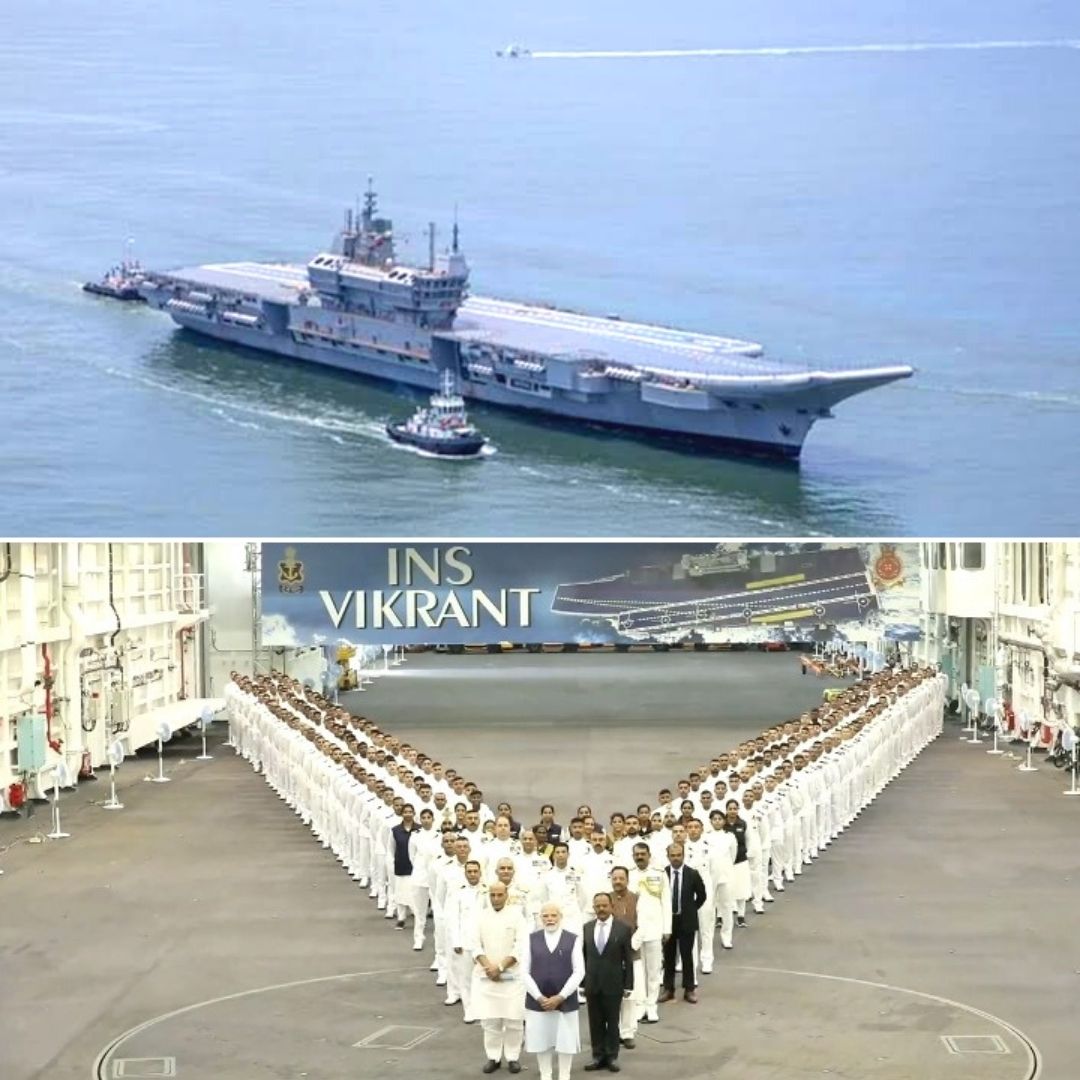INS Vikrant: Know About All Key Features & Feats Of India's First-Ever Made-In-India Aircraft Carrier
Writer: Laxmi Mohan Kumar
She is an aspiring journalist in the process of learning and unlearning many things. Always up for discussions on everything from popular culture to politics.
India, 3 Sep 2022 5:12 AM GMT
Editor : Snehadri Sarkar |
While he is a massive sports fanatic, his interest also lies in mainstream news and nitpicking trending and less talked about everyday issues.
Creatives : Laxmi Mohan Kumar
She is an aspiring journalist in the process of learning and unlearning many things. Always up for discussions on everything from popular culture to politics.
INS Vikrant was inaugurated on September 2 in a historic feat, and it marks the firsts for many achievements in the country. From being an entirely indigenously built warship to creating job opportunities for over thousands of Indian industries, here's all you need to know about it.
INS Vikrant, the first Made-in-India aircraft carrier, constructed by the Cochin Shipyard Limited (CSL) for the Indian Navy, was inaugurated by Prime Minister Narendra Modi on September 2 in what was described as a "historic occasion". The aircraft carrier got its name from its predecessor, Vikrant (R11), which played a pivotal role in the 1971 war.
Commissioned at a cost of ₹20,000 crores, INS Vikrant was built with state-of-the-art automation features and indigenous materials, which then makes it an "exceptional symbol of Atmanirbhar (self-reliant) India". With INS Vikrant's induction, India will be joining the select club of nations, including the United States, the United Kingdom, Russia, China and France, that are capable of building their aircraft carriers.
It also happens to be the largest warship ever built in the maritime history of the nation, almost as big as the size of two football fields put together, as described by the Indian Navy themselves. The warship that holds many titles and floats proudly on the Indian waters also boasts of many other firsts in the country.
First-Ever Indigenously Designed And Built Aircraft Carrier
Vikrant has been exclusively designed by the Indian Navy's Warship Design Bureau (WDB) and built by the Cochin Shipyard Limited, under the Ministry of Ports, Shipping & Waterways. This makes it completely indigenous to the Indian grounds, with over 90 per cent of the hull, 50 per cent of the machinery and 30 per cent of weapons and sensors designed and built with materials made in India.
Top And Overall Special Grade Steel Developed In India
The Centre had announced that over 76 per cent of the material and equipment that went on board is indigenous, which means around 21,500 tonnes of special grade steel developed within the country was used in the construction of the ship. This would be the first time such indigenous special grade steel has been employed in Indian Naval History.
Major industrial houses, such as the BEL, BHEL, GRSE, Keltron, Kirloskar, L&T, Wartsila India, and over 100 MSMEs, were brought in to contribute to this.
Evolved From A 3D Model To Reality
It would be for the first time in the country that such a huge project has been completely modelled in 3D. As per reports by FirstPost, the production drawings for the entire warship have been extracted from the 3D model. Proudly announcing the same, the Union Ministry of Ports, Shipping and Waterways had said that the CSL "carried out the detailed engineering of the ship using advanced software which enabled the designer to get a complete 3D view of the compartments of the ship".
Largest Ever Warship Built In Indian Navy And Cochin Shipyard's History
Termed as a floating city, the warship houses 18 floors and 14 decks with 2,300 compartments that can carry around 1,500 sea warriors. It carries a mix of about 30 aircraft, MIG-29K fighter jets, Kamov-31, and MH-60R multi-role helicopters, in addition to indigenously manufactured Advanced Light Helicopters (ALH) and Light Combat Aircrafts (LCA).
The shipbuilding operations commenced in 1978, followed by repairs in 1981, marine engineering training in 1993 and offshore upgradation in 1999. The ambitious long-term project was floated out of its dry dock in 2011, and after successful trials in 2021, the completed warship was launched in 2022. The largest facilities available in the country were used for the warship, and it alone could build vessels up to 1.1 lakh tons and repair vessels up to 1.25 lakh tons. The 262 m long INS Vikrant displaces approximately 45,000 tons when fully loaded.
Creating Opportunities
Having been built indigenously, a collective effort of many Indian industries went behind the INS Vikrant. It helped in the development of ancillary industries and the creation of employment opportunities for 2,000 CSL personnel and approximately 13,000 industrial employees. Apart from this, over 40,000 people were also indirectly employed for the completion of the project.
This facilitated a plough-back effect on the nation's economy where they could reinvest profits within the country then distribute them to external stakeholders.
Also Read: First Indigenous Aircraft Carrier Vikrant Handed Over To Indian Navy
 All section
All section















